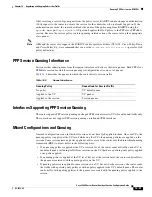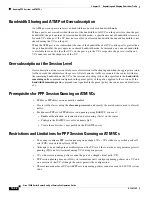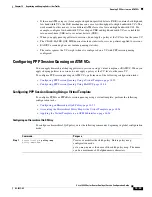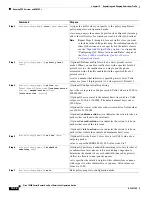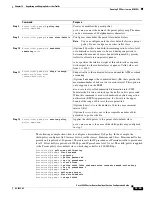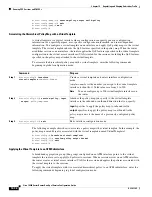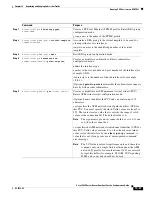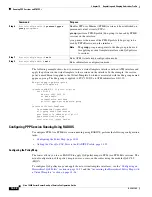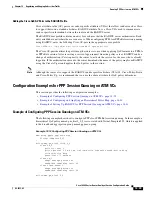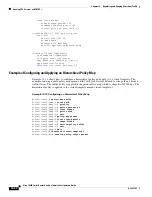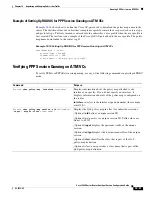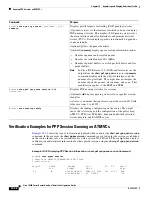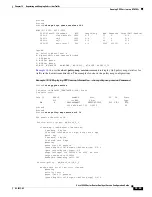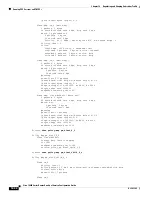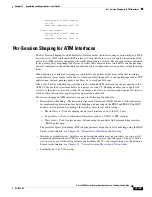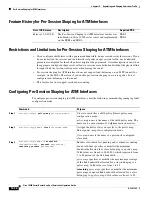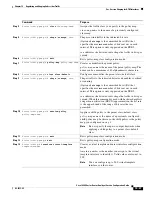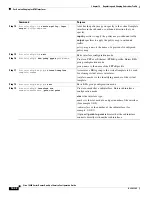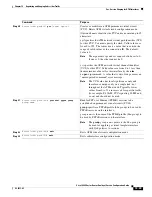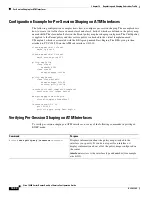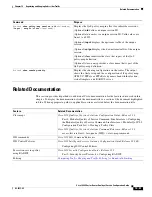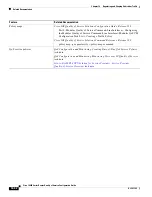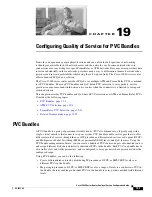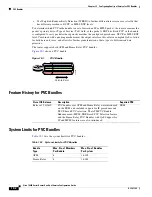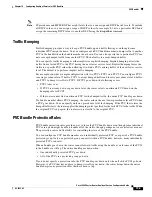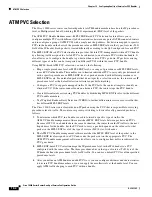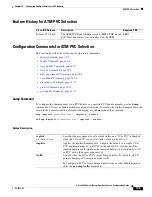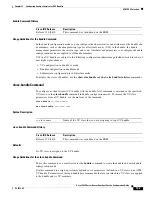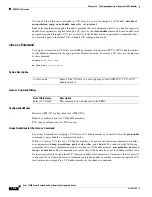
18-45
Cisco 10000 Series Router Quality of Service Configuration Guide
OL-7433-09
Chapter 18 Regulating and Shaping Subscriber Traffic
Per-Session Shaping for ATM Interfaces
Average Rate Traffic Shaping
cir 80%
bandwidth remaining ratio 80
Class class-default
Average Rate Traffic Shaping
cir 50%
bandwidth remaining ratio 20
Per-Session Shaping for ATM Interfaces
The Per-Session Shaping for ATM Interfaces feature enables the router to shape session traffic on L2TP
network server (LNS) outbound ATM interfaces. Using this feature, you can apply a hierarchical QoS
policy to an ATM interface and manage the traffic belonging to a session. The shaping feature configured
in the parent policy map shapes the classes of traffic that comprise the session traffic and the queuing
features configured in the child policies enables the router to queue the session packets, rather than drop
them.
When policing is configured to manage session traffic, the policer might drop traffic that is within a
reasonable rate (for example, traffic bursts), which can affect the quality of end applications such as TCP
applications. Instead, queuing packets enables you to avoid packet drops.
When a QoS policy with shaping is attached to an outbound ATM interface, the shaper applied to the
ATM VC shapes the downstream traffic as it passes over the VC. Shaping enables you to apply QoS
services to the classes of session traffic. For example, one class of a session might require low latency
while another session class might require a guaranteed bandwidth.
Per-session shaping on ATM interfaces supports the following functionality:
•
Hierarchical scheduling—The hierarchical queuing framework (HQF) defines a QoS architecture
for implementing hierarchical packet scheduling and queuing on the PRE3 and PRE4. The HQF
enables service providers to manage their QoS at three layers of hierarchy:
–
Physical layer—Used for shaping the physical interface such as the OC-3 port.
–
Logical layer—Used to schedule subinterfaces such as a VLAN or PPP sessions.
–
Class layer—Used for class queues, defined using the modular QoS command line interface
(MQC) policy map.
The parallel express forwarding (PXF) engine performs all packet-level scheduling using the HQF.
For more information, see
Chapter 22, “Hierarchical Scheduling and Queuing.”
•
Interface oversubscription—Interface oversubscription enables service providers to assign a total
committed information rate (CIR) to a given port that is greater than the speed of the port. In this
way, the router can statistically guarantee bandwidth to the VCs, thus improving network utilization.
For more information, see
Chapter 15, “Oversubscribing Physical and Virtual Links.”
•
Scalability up to 61,500 sessions

